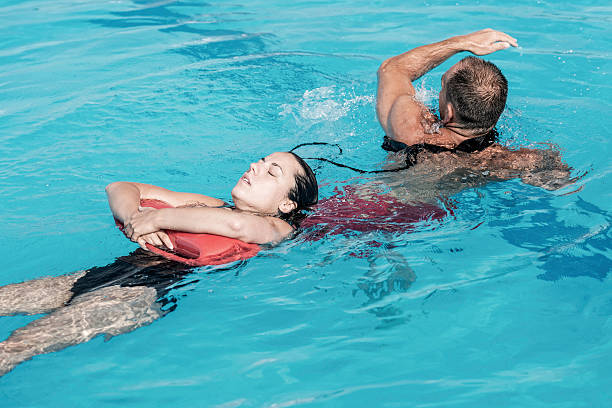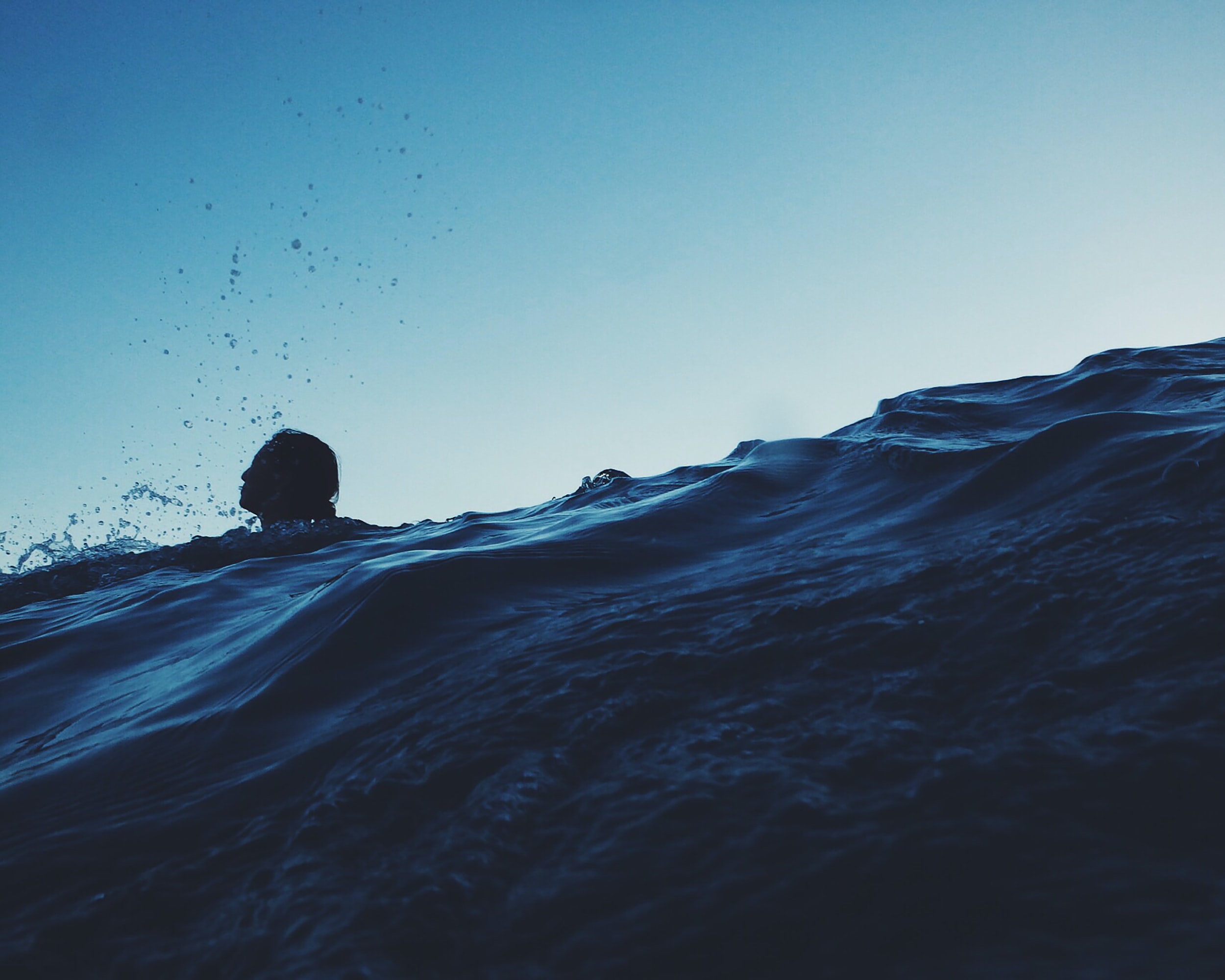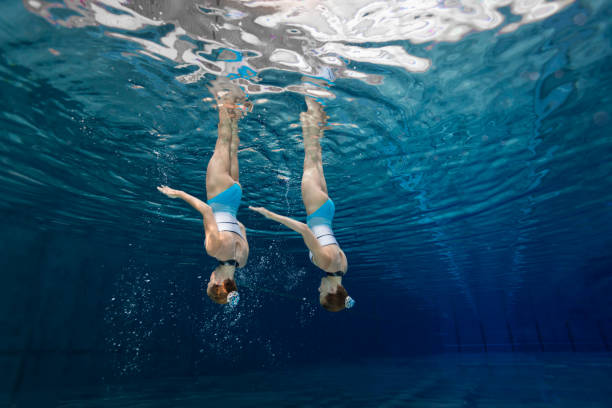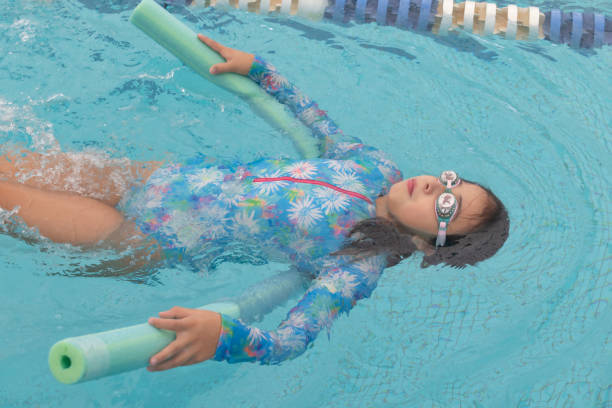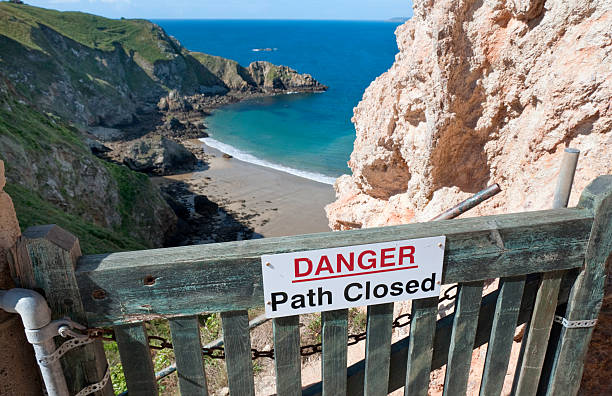Your upper-body strength can be a benefit to your swimming ability. A pull buoy can be a great way to strengthen your arms and target them during training. You will improve your pull strength and muscle endurance by learning to use a pull buoy properly. This will allow you to swim faster and longer.
This article will cover everything you need to know when using a pull buoy. We’ll first explain what a pull buoy looks like and what it does. We’ll then discuss some tips on using this training aid and improving your posture while using it.
What is a Pull Buoy?
A foam pull buoy, similar to a kickboard, helps you train your upper body. This foam pull buoy is a figure-eight-shaped piece between your legs. It adds buoyancy and support to your lower body. This buoyancy allows you not to kick as hard and prevents your legs and hips from sinking.
You don’t need to worry about kicks, so you can concentrate on your arms and propel yourself through the water. This is an excellent workout for your upper body and helps you build strength and endurance.
What are the benefits of using a pull buoy?
A pull buoy can help you become a better swimmer, whether you’re a triathlete in open water oder a sprinter in a pool.
A pull buoy’s primary advantage is its ability to train your upper body. You can also improve your swimming technique by using a pull buoy.
TARGET YOUR UPPER BODY
Your kick is a significant source of power during your normal swim stroke. One study showed that young male swimmers depend on their kick for 29.7% of their total power while swimming. Young female swimmers rely on their kick for 33.4% of their total propulsion.
You won’t get much propulsion from your legs when you train with a pull-boil buoy. Your arms will need to produce more force than usual. This type of training can be a great way to strengthen your upper body and increase endurance.
IMPROVE TECHNIQUE
Pull buoys allow you to concentrate on your upper-body stroke technique because you don’t have much to worry about kicks. It is possible to become more aware of the movements of your arms and shoulders and adjust your form to maximize stroke efficiency.
You can also swim slower with a pull buoy. Because of the extra float this piece provides, you don’t need to swim fast to maintain your body in the water. Slow swimming allows you to fine-tune your technique by slowing down.
How to Use A Pull Buoy
A pull buoy is an excellent equipment for beginners or triathlon preparation. It can be used alone or as an adjunct to other training tools. It would be best if you did not become dependent on training aids. Let’s look at how to use a pull buoy properly.
- Don’t kick too hard: A light leg kick will help you to maintain your upper-body and hip rotation while performing the backstroke and freestyle strokes.
- Don’t tighten your muscles. Let your legs flow naturally. Unnatural positions can cause cramps in your calves.
- You can place the pull buoy in a variety of positions. The pull buoy may be placed between your ankles, calves, knees, and upper thighs. You can adjust the work to improve your balance in the water.
- Pull buoys can be used occasionally, but not always As with any training tool, you should use them sparingly to improve your stroke. However, you will still need to improve your overall stroke. You won’t be competing with a pull buoy.
You can use a pull buoy alone or with other training aids like hand paddles and a snorkel, as we have already mentioned.
Hand paddles can increase resistance in your swimming stroke. Hand paddles that have a pull buoy are great for strengthening your upper body.
A snorkel can be used for long-distance swimming and to train proper alignment. Use a snorkel with pull buoys to improve your body position in the water.
How to Improve your Body Position
You can fix these three points with the pull buoy to improve your body position.
FOCUS ON HEAD POSITIONYour head position can be affected by your hips or legs. This could increase drag.
The pull buoy should be placed between your legs. This will make your legs float more quickly and help you focus on your head. Focus on the black line at the bottom of your pool and keep your eyes at approximately 45 degrees below the surface. This will help you break the water surface more easily, create less drag, and provide greater forward propulsion.
FOCUS ON YOUR SHOULDER POINT
Excessive rotation of the shoulders is a common error when swimming freestyle (front crawlstroke) or backstroke. In an effort to balance your body, this can lead to an incorrect catch phase for the arm stroke as well as an irregular leg kick.
Imagine your upper body being in a rectangle by placing the pull buoy between you knees. Your goal is to keep your body straight, eliminating any lateral movement and making your arm strokes more symmetrical. The ideal degree of shoulder rotation should be between 35 and 45 degrees.
CORE STRENGTH IS KEY
It is important to strengthen your core. This is the area that connects your upper and lower bodies, creating symmetry between your hips and shoulders. This area should not be too weak. Your swim stroke will only be as efficient if it is.
Try to place the pull buoy between your ankles. Relax your body as much possible. Think about extending your head forward and pointing your toes behind. This will allow you to stretch your upper body, relax your core and stabilize your backbone.
Get All Your Swim Gear in a Pull Set
Get your swim cap, goggles and pull buoy ready for a great pulling swim set! You now know the basics of a pull buoy and how to properly use it. This will allow you to incorporate this tool into your training program. This device can help you improve your swimming performance by increasing your upper-body strength and improving your body position.

